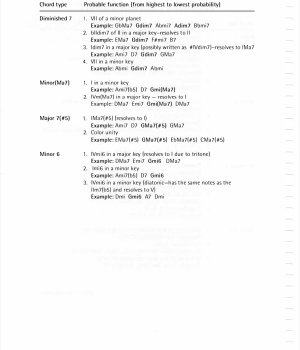TSJMajesty
Rock Star
- Messages
- 7,730
You're the first person that I've ever seen here or anywhere else agree with that definition!yeah the ascent/descent thing is what I was always taught as well and why its called the melodic scale

WRT your question (assuming I understood your gist) about keys..., the way I understand it is, the key a song is called out does have something to do with how those notes and chords are played. Cuz you're right: Why do you call a song in the key of Am, when it uses the same notes as the key of C?
To me, it comes down to how you phase the melodies within. Which then gets into modes.

Seems to me there is some overlap when discussing music theory. Not to mention terms that get incorrectly interchanged. I'm sure I've done it. Even though I try not to...



 I would've liked to hear it end on a Major chord though. That'd been the icing to my ears.
I would've liked to hear it end on a Major chord though. That'd been the icing to my ears. 